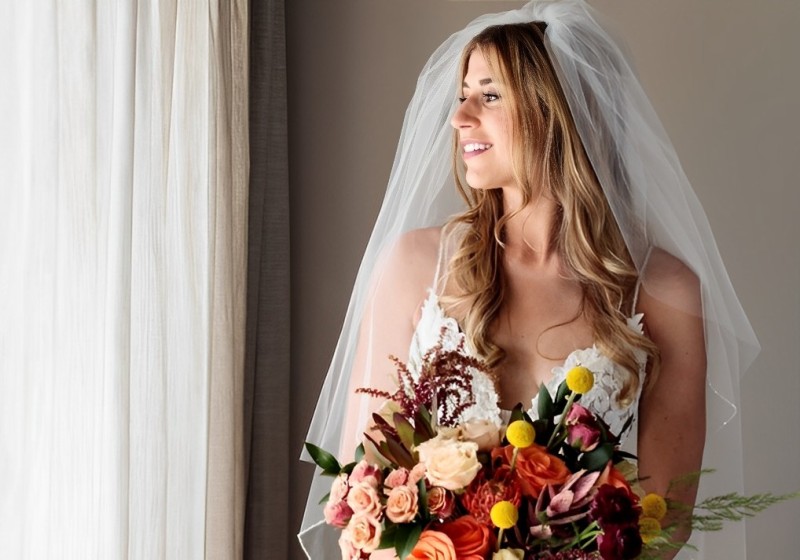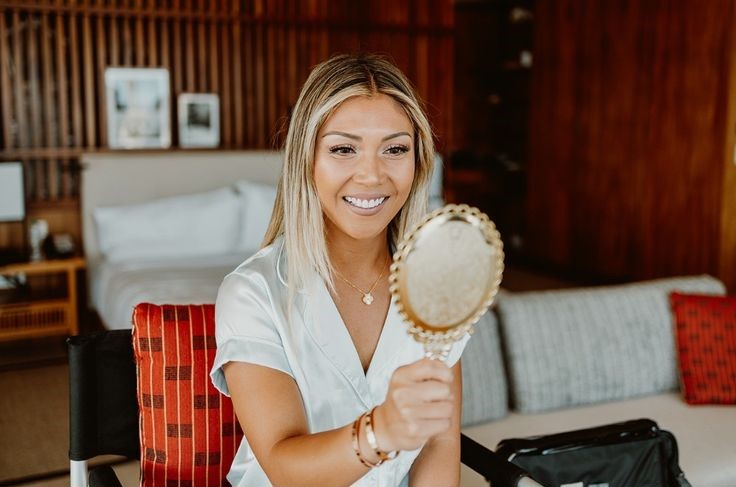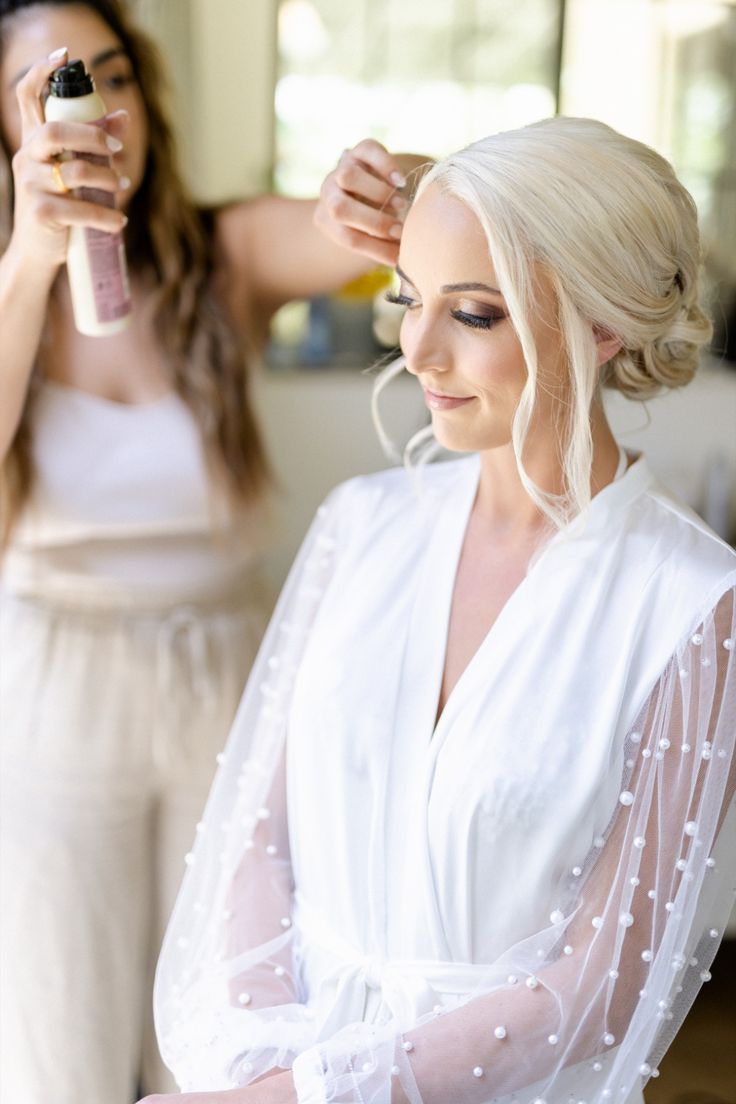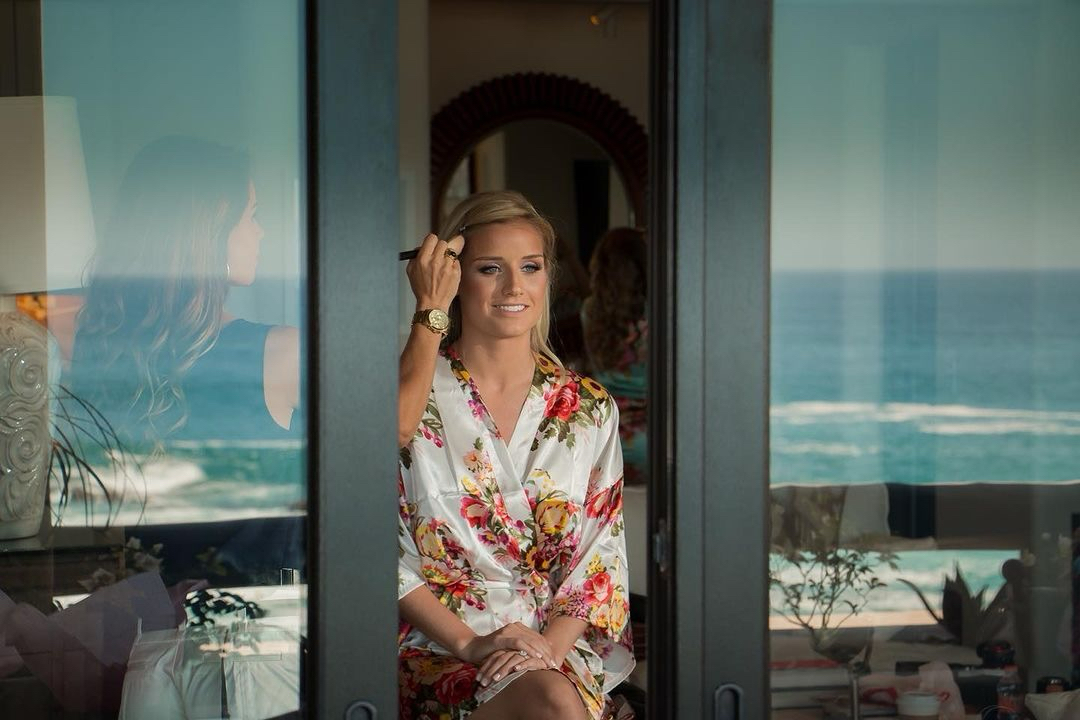Your wedding day is one of the most memorable moments of your life, and every detail matters. A wedding veil is a timeless accessory that adds a touch of elegance and tradition to a bride’s dress. While it may seem like a simple accessory, selecting the perfect veil requires careful consideration to ensure it complements your dress and enhances your overall bridal look. However, choosing and wearing a wedding veil involves more than just picking a beautiful piece of fabric. There are several common mistakes that brides make when it comes to their wedding veils.
Let’s explore the biggest wedding veil mistakes to avoid on your big day:
1. Ignoring Dress Style and Silhouette
One of the most common mistakes brides make when choosing a wedding veil is ignoring to consider the style and shape of their wedding dress. Your veil should seamlessly blend with your gown, enhancing its features rather than conflicting with them. For example, if your dress has sophisticated detailing or embellishments on the back, opting for a simple and elegant veil may be the best choice. On the other hand, a more elaborate veil may complement a simple and understated dress. Take into account the neckline, sleeves, and overall design of your dress to ensure a perfect bridal look.
2. Ignoring Length and Style Options
Veils come in various lengths and styles, ranging from short and sweet birdcage veils to dramatic cathedral-length veils. Choosing the wrong length or style can disturb the balance of your overall ensemble. Consider the formality of your wedding and the venue when deciding on the length of your veil. A short veil may be perfect for a casual outdoor wedding, while a cathedral-length veil can create a grand and elegant statement in a traditional church setting. Additionally, explore different styles to find the one that complements your dress and personal style.
3. Neglecting the Importance of Fabric
The fabric of your wedding veil plays a key role in its overall look and how well it complements your dress. Ignoring the fabric can result in a veil that looks out of place or clashes with the texture of your gown. Common veil materials include lace, tulle, and silk. Tulle is lightweight and versatile, making it a popular choice for various wedding styles. Lace adds a romantic and vintage touch, while silk provides a luxurious and smooth finish. Pay attention to the fabric details of your dress and choose a veil that complements or contrasts in a harmonious way.
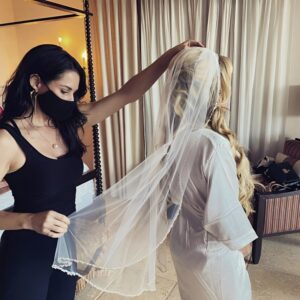
4. Placement of veil overlooking
The placement of the veil is another factor that brides often overlook, but it has a significant impact on how the bridal ensemble looks and feels. The way your veil is secured can affect your hairstyle and how well it frames your face. Consider where you want the veil to sit – whether it’s at the crown of your head, just above an updo, or secured below a bun. Experiment with different placements during your dress fittings to find the most flattering and comfortable option.
5. Neglecting Personal Style
While it’s essential to consider the style of your dress, it’s equally important to add your personal style into your wedding day look. Your wedding veil should reflect your personality and preferences, whether you’re a classic and timeless bride or a modern and edgy one. Don’t be afraid to add unique touches, such as colored veils, floral accessories, or sophisticated detailing that aligns with your taste. Your wedding day is a celebration of your love and individuality, and your veil should be a reflection of that.
6. Failing to Plan for the Ceremony and Reception
Brides often forget to plan for the practical aspects of wearing a veil throughout the ceremony and reception. Consider the logistics, such as whether you’ll be wearing the veil for the entire event or if you plan to remove it after the ceremony. If you choose a longer veil, ensure that it won’t disrupt movement or create challenges during the first dance or other activities. Having a plan for when and how you’ll wear your veil can help you avoid any last-minute hiccups and allow you to fully enjoy every moment of your special day.
7. Ignoring Hair Accessories and Hairstyle
Your wedding veil doesn’t stand alone—it’s part of your overall bridal look, which includes your hairstyle and any additional hair accessories. Coordinate your veil with your chosen hairstyle and accessories to ensure anorganized and polished look. If you plan to wear a tiara, comb, or floral hairpiece, consider how it will work with the veil. Communicate with your hairstylist and veil designer to achieve a sweet combination that complements your overall bridal ensemble.
Conclusion
Choosing the perfect wedding veil is a significant decision that requires thoughtful consideration of various factors. Take the time to consider your dress, face shape, hairstyle, and overall aesthetic to choose a veil that enhances your natural beauty and adds the finishing touch to your dream wedding ensemble. With careful consideration and attention to detail, you’ll walk down the aisle radiating confidence and grace on your special day.
If you are worried about your wedding day perfect look including your veil placement then Blanc Bridal Salon is always there to help you. When you choose us for your bridal services then you can relax knowing that you are in safe and professional hands as we are truly dedicated to provide extraordinary bridal services.
